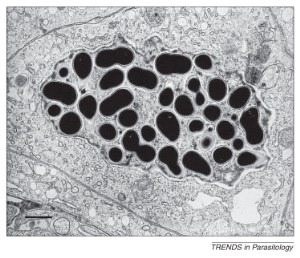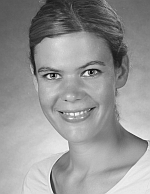Previous events - Page 259
Late lunch talk by Robin Cristofari
Welcome to the GeoHyd Lunch Seminar on Friday 24 October @12:15. Meet up in AUD 3 in the Geology building (OBS: different location than usual!!).
M.Sc. Ingrid Augusta Aursnes Ingebrigtsen ved Farmasøytisk institutt vil forsvare sin avhandling for graden ph.d: Effect of lipid source and glutamate on growth, metabolism and muscle quality in Atlantic cod (Gadus morhua).
Pia Zacharias,Postdoctoral Fellow , ITA
This week, we read a paper from Ecology Letters by Barnagaud et al. 2014.
This Friday we will discuss this review paper about the fascinating and numerous microsporidian parasites.
The Lattice Boltzmann Method and its application in modeling of physiological flows
Michael Kachelriess, NTNU [slides]
The IceCube Collaboration announced 2012 evidence for the first detection of extraterrestrial neutrinos. Meanwhile, the discovery of a extraterrestrial neutrino flux (of surprisingly large magnitude) has been established. After a review of the basic ideas of high-energy neutrino astrophysics, I discuss possible sources for these neutrinos and their signatures. I discuss the neutrino yield from collisions of cosmic ray nuclei with gas and the possibility that Galactic sources can explain the IceCube excess. I review also the cascade bound on extragalactic neutrinos and its consequences.
PROGRAM (pdf: This is an excerpt from the booklet that will be handed out at the conference)
Friday seminar by Charles Krebs
Welcome to the first GeoHyd Lunch Seminar this fall term Friday 17 October @12:15. Meet up in AUD I in the Geology building.
Kathleen M. Jennings, Fafo Institute for Labour and Social Research
This week we will read a paper on competition in bryozoans by Svensson and Marshall 2014: "Limiting resources in sessile systems: food enhances diversity and growth of suspension feeders despite available space".
Adam Sørensen (UiO) will give a talk with title: Almost commuting matrices
Abstract: Two matrices A,B are said to almost commute if AB is close to BA (in a suitable norm). A question of Halmos, answered by Lin, asks if two almost commuting self-adjoint matrices are always close to two exactly commuting self-adjoint matrices. We will survey what is known about this and similar questions, and report on recent work with Loring concerning how the questions change if we look at real rather than complex matrices.
Jörn Kersten, Universitetet i Bergen [slides]
Despite the astonishing success of the standard LambdaCDM cosmological scenario, there is mounting evidence for a tension with observations. For example, some measurements indicate that a part of the dark matter is hot. In addition, the observed properties of relatively small galaxies do not quite agree with the predictions by simulations of structure formation.
I will discuss a simple particle physics model containing cold dark matter (DM) and sterile neutrinos. Both are charged under a new gauge interaction. The resulting DM self-interactions and DM-neutrino interactions resolve the problems with structure formation. The sterile neutrinos can account for both a small hot DM component and the neutrino anomalies found in short-baseline experiments.
Kristan Ranestad (Dept. of Math, UiO) gives a seminar in room 107, 1st floor N.H. Abels House at 14:15 Tuesday October 14th. Algebra og statistics: Phylogenetic models from an algebraic geometric viewpoint
We feel that it's time to find out about the Pairwise Sequential Markovian Coalescent and it derivations. How does it magically infer demography from single genomes? Why does the original author recommend other tools? Why do all these demography plots look the same? And can I use it for my data? Once more, we'll need more than one paper to find out. We'll focus on the first publication to present the PSMC, Li & Durbin (2011) in Nature, but we invite participants with a bit of extra time to check out and report on updates on the method, which were published by Schiffels & Durbin (2014) in Nature Genetics, and by Harris et al. (2014) on arXiv.
A collection of recent CEES publications
”Protist diversity across a marine - freshwater gradient with a special focus on the X-cell parasite”
Philip Bull,Postdoctoral Fellow , ITA
"Effekter av miljøgifter på torsk (Gadus morhua) fra indre Oslofjord"
Nele Kristin Meyer at the Department of Geosciences will be defending her dissertation: Debris flows - Initiation conditions and impact on functionality of Norwegian road network
Doctoral candidate Nele Kristin Meyer at the Department of Geosciences will give a trial lecture on the given topic: The challenges from global change for landslide hazard assessment
Anders Kvellestad, UiO
Recently a few small (but intriguing) deviations from Standard Model predictions have been identified in the LHC data, one being an excess in the dilepton spectrum in a CMS search for so-called 'kinematic edges' -- a classic signal of physics models with heavy particles decaying through sequential two-body decays. We present an interpretation of this excess in terms of a supersymmetric model with squarks undergoing such sequential decays down to the lightest neutralino, which is a viable candidate for particle dark matter. The good-fit parameter space of the model is presented, along with predictions for squark production at the upcoming 13 TeV LHC run.
Further, using the above analysis as an example, we briefly comment on the main challenges of confronting complex models like Supersymmetry with experimental results, and present an ongoing effort to overcome some of these challenges.


